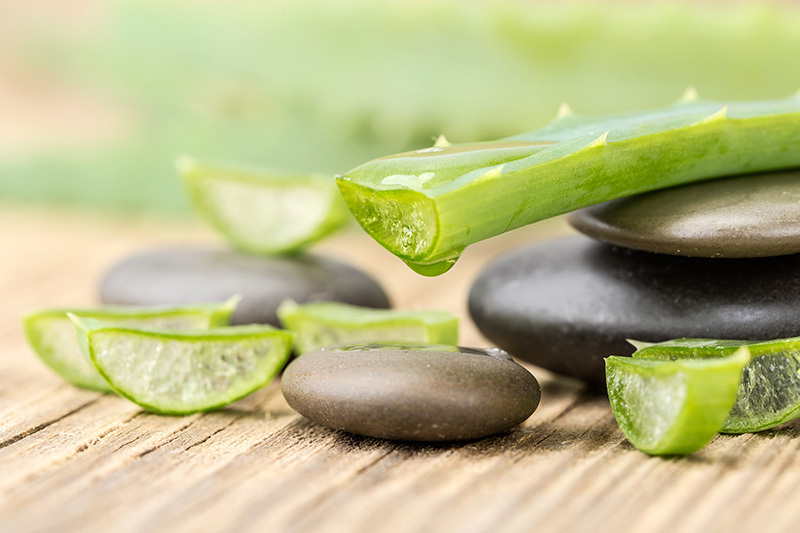Unlock the Potential of Your Hydrangeas with These Tricks
Posted on 25/08/2025
Unlock the Potential of Your Hydrangeas with These Tricks
Hydrangeas are one of the most beloved flowering shrubs, transforming gardens with their bold colors and lush blooms. Yet, many gardeners struggle to help their hydrangea bushes flourish to their full potential. If you want to enjoy breathtaking hydrangea displays year after year, it's essential to know the expert secrets for maximizing hydrangea growth, color, and health. This comprehensive guide will reveal the most effective techniques and proven tips for unlocking the potential of your hydrangeas--ensuring your garden is the envy of the neighborhood!
Understanding Hydrangeas: The Basics You Need to Know
Before you can truly help your garden hydrangeas thrive, it's important to understand a few foundational facts about their nature. Hydrangeas come in several popular varieties, each with unique requirements and stunning attributes.
- Bigleaf Hydrangeas (Hydrangea macrophylla) - Known for their mophead and lacecap flowers, these are the classic pink and blue hydrangeas.
- Panicle Hydrangeas (Hydrangea paniculata) - Featuring large cone-shaped blooms, often white or pale lime, and incredibly hardy.
- Oakleaf Hydrangeas (Hydrangea quercifolia) - Appreciated for their distinctive foliage and white-to-pink flower clusters.
- Smooth Hydrangeas (Hydrangea arborescens) - Boasting large, globular flowers, such as the classic 'Annabelle'.
- Climbing Hydrangeas (Hydrangea anomala) - Versatile vines or ground cover with fragrant, lacy blooms.
Understanding which hydrangea you have is crucial for tailoring care to unlock their full potential. If you're not sure, compare your plant's leaves and blooms with the descriptions above or consult a local nursery expert.
Hydrangea Growth Requirements at a Glance
- Sunlight: Most require morning sun and afternoon shade.
- Soil: Well-draining, moisture-retentive soil.
- Water: Consistent moisture, especially in summer heat.
- Fertilizer: Regular feeding during the growing season for best blooms.

Choosing the Right Location: The Foundation for Gorgeous Blooms
One of the most important tricks for getting the absolute best from your hydrangeas is selecting the optimal planting site. The right location protects your hydrangea from harsh conditions and promotes healthy growth.
Tips for Perfect Placement
- Morning Sun, Afternoon Shade: Almost all hydrangeas prefer this balance. Too much sun causes wilting and scorched leaves, while deep shade restricts blooming.
- Shelter from Wind: Plant close to buildings or hedges to shield your hydrangeas from strong winds, which can damage flowers and break stems.
- Spaciousness: Ensure good airflow to prevent diseases. Avoid crowding plants; allow at least 3 feet of space between shrubs.
Paying close attention to location from the start is an essential trick for unlocking your hydrangeas' potential--healthy blooms, stronger stems, and fewer problems all await!
Soil Secrets: How to Unlock Remarkable Color and Health
A commonly-overlooked trick for maximizing hydrangea potential is optimizing your garden soil. Hydrangeas are heavy feeders and need specific conditions to truly flourish. Here's how you can upgrade your soil to unlock the best growth and color:
Improve Soil Texture and Drainage
- Add Organic Matter: Mix in compost, aged manure, or leaf mold to enrich soil and encourage moisture retention.
- Ensure Good Drainage: Hydrangeas hate "wet feet." If your garden soil is heavy clay, amend liberally with sand and compost, or grow in raised beds.
pH: The Secret to Spectacular Color
Did you know you can change hydrangea flower color, especially for bigleaf types, by adjusting soil pH?
- Acidic Soil (pH below 6): Produces blue blooms.
- Alkaline Soil (pH above 7): Yields pink blooms.
Tip: To turn hydrangeas blue, add aluminum sulfate to your soil. For pink, mix in garden lime. Always test your soil's pH first!
Fertilizing Hydrangeas the Right Way
Feeding your hydrangeas properly is an essential trick for helping them reach their full flowering potential. Here's how:
- Spring Start: Apply a balanced, slow-release fertilizer (e.g., 10-10-10) as new growth emerges.
- Early Summer Boost: Supplement with a light feeding as buds form, using a bloom-boosting formula for bigger flowers.
- Avoid Overfeeding: Too much fertilizer promotes leafy growth, not blooms, so follow label directions carefully.
Watering Wisdom: Keep Hydrangeas Happy and Hydrated
Hydrangeas thrive on consistent moisture, but improper watering can ruin all your hard work. Unlock the secret to lush hydrangea growth with these expert watering tricks:
Tricks for Perfect Hydrangea Watering
- Deep Watering: Water 1-2 times per week, allowing moisture to reach deep roots. Surface-level watering encourages shallow roots and weak growth.
- Early Morning Schedule: Reduces evaporation and minimizes disease risk.
- Mulch Matters: Spread 2-3 inches of organic mulch (like bark chips or shredded leaves) beneath hydrangeas to retain soil moisture and regulate temperature.
- Avoid Wet Foliage: Always water soil, not leaves, to prevent fungal diseases.
Pruning Like a Pro: How and When to Prune for Maximum Blooms
One of the most often misunderstood tricks for unlocking hydrangea potential is proper pruning. Different hydrangea varieties require different methods, so it's crucial to know your plant before you snip!
Pruning Tips by Hydrangea Type
- Bigleaf & Oakleaf Hydrangeas: Bloom on old wood. Prune immediately after flowering, removing dead wood and spent flowers only.
- Panicle & Smooth Hydrangeas: Bloom on new wood. Cut back hard in late winter or early spring--don't be afraid to reduce stems by up to half for bigger, more robust blooms!
- Climbing Hydrangeas: Require only occasional tidying to remove dead or damaged branches.
Never prune in late summer, autumn, or winter as you risk removing next year's flower buds, especially for classic mophead hydrangeas.
Unlocking Potential with Proper Support and Staking
Heavy blooms and vigorous growth can sometimes cause hydrangeas to flop, especially after heavy rains. A simple trick to keep your hydrangeas looking neat and tidy is providing discreet support:
- Insert garden stakes: Use natural wood or green bamboo stakes early in the season for less visible support.
- Circle supports: Ring-style supports or peony cages help big varieties like 'Annabelle' stay upright.
Well-supported hydrangeas display their blooms with pride, making your garden look professionally designed.
Guarding Against Pests and Problems: Keep Your Hydrangeas Healthy
Even the healthiest hydrangeas can >occasionally fall prey to pests or diseases. Unlock your hydrangea's full potential by proactively preventing issues:
- Leaf spots and mildew: Prune for airflow and avoid wetting leaves. Remove affected leaves promptly.
- Slugs and snails: Tackle with iron phosphate baits or copper bands--especially in damp, shady locations.
- Aphids and spider mites: Hose off or use insecticidal soap. Encourage beneficial bugs like ladybugs.
Healthy soil and good gardening hygiene--like regular cleaning up of spent blooms and fallen leaves--are keys to resilient, vibrant hydrangeas.
Cultivating More Blooms: Tricks for Flower-Loaded Hydrangeas
Sometimes, even well-tended hydrangeas give lackluster flowering. Here are expert secrets for maximum hydrangea bloom:
- Protect flower buds: Mulch or wrap plants before harsh winter to guard against bud-killing frosts (vital for bigleaf types in cold zones).
- Light feeding during bloom: Use high-phosphorus fertilizer (like 10-20-10) as flowers form.
- Deadhead spent blooms: For reblooming types, this can encourage a second flush of flowers.
- Check sunlight: Thin overhead branches if shrubs are getting too much shade.
Propagating Hydrangeas: Multiply Your Garden's Beauty
Unlock your hydrangea's potential by creating more beauty for free! Hydrangeas are easy to propagate by taking cuttings:
- Select a healthy shoot: Choose a non-flowering stem in spring or early summer.
- Cut below a leaf node: Snip a 4-6 inch section, remove bottom leaves.
- Root in moist soil: Dip in rooting hormone and plant in moist potting mix. Cover with a plastic bag to retain humidity.
- Transplant after rooting: In a few weeks, once strong roots form, move your new hydrangea to the garden!
Show-Stopping Varieties: Try These for Extra Garden WOW
To truly unlock the potential of your hydrangea display, consider adding some of these top-rated cultivars:
- 'Endless Summer' - Reblooming bigleaf with pink or blue flowers.
- 'Annabelle' - Enormous white blooms on strong stems.
- 'Limelight' - Stunning lime-to-white-to-pink panicle hydrangea.
- 'Little Quick Fire' - Compact, early-blooming panicle.
- 'Ruby Slippers' - Compact oakleaf with vivid red-pink flowers in late season.
Mixing different varieties will maximize visual impact and create a prolonged season of color in your landscape.
Year-Round Hydrangea Care Calendar
- Early Spring: Prune (new-wood types), plant new hydrangeas, apply compost, fertilize.
- Late Spring: Mulch, fertilize as buds form, stake tall types.
- Summer: Regular watering, deadhead spent blooms, monitor pests.
- Autumn: Stop feeding, clean up, start winter protection.
- Winter: For sensitive types, mulch thickly or wrap stems with burlap in cold climates.

Frequently Asked Questions About Hydrangea Care
What's the fastest way to make hydrangeas bloom more?
Ensure the right pruning for your type, give them enough sun, and feed with a bloom-promoting fertilizer during bud formation. Protect flower buds from late frosts.
Can I grow hydrangeas in pots?
Yes! Choose a large, deep container, use quality potting mix, and water frequently in summer. Try compact varieties for best results.
How do I turn hydrangeas blue or pink?
Amend the soil pH--add aluminum sulfate for blue, garden lime for pink. Only bigleaf (macrophylla) types change color in this way.
Why do my hydrangea leaves turn yellow?
Usually, this is a sign of overwatering, poor drainage, or nutrient deficiency. Improve soil, check for pests, and feed with a complete fertilizer.
Conclusion: Unlocking Hydrangea Potential--One Bloom at a Time
With these insider tips for unlocking the potential of your hydrangeas, your garden is destined to impress! By mastering smart site selection, enriched soil, tailored watering, precise pruning, and proper protection, you'll enjoy fabulous flowers season after season. Remember, the secret lies in treating hydrangeas as the unique plants they are--give them the right balance of care and watch their jaw-dropping transformation. Start using these tricks today and unlock your hydrangeas' potential for years of color, beauty, and pride!
Latest Posts
Discover the Best Spots for Wildflower Viewing in [BOROUGH/NEIGHBOURHOOD]
Unlock the Potential of Your Hydrangeas with These Tricks
3 straightforward approaches for flower preservation





